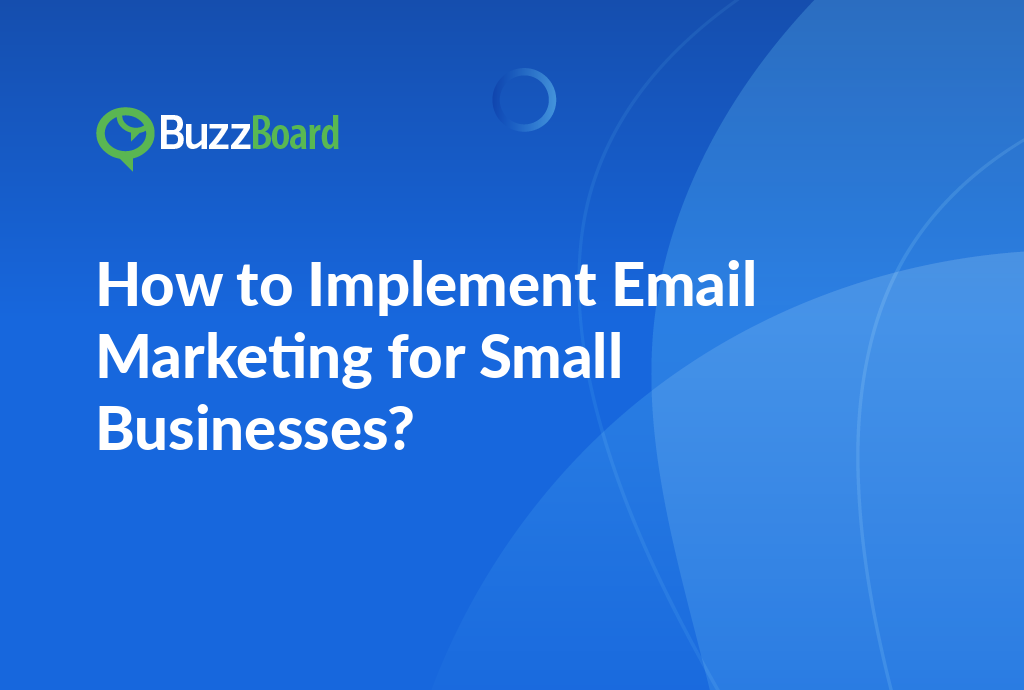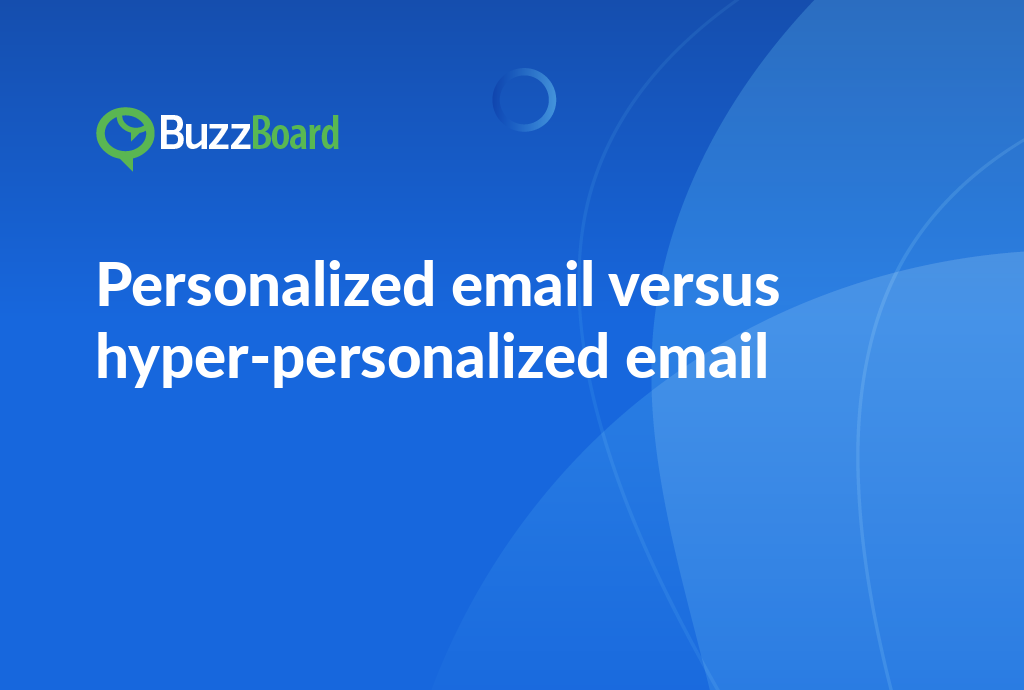How Can Email Marketing be Efficiently Implemented for Small Businesses?
Email marketing is a valuable tool for nurturing leads and transforming them into loyal customers, particularly for small businesses. This method affords several benefits, including segmentation, personalization, and the capacity to track analytics.
Small businesses can employ email marketing to segment their audience based on an assortment of factors such as demographic information, behavior, and purchase history. Consequently, they can develop personalized email campaigns that directly address each individual subscriber. According to Campaign Monitor, emails with personalized subject lines have a 26% increased likelihood of being opened.
One key tactic for email personalization is creating unique email subject lines. Eye-catching, relevant subject lines can boost open rates and engagement. Superior subject lines curate a significant first impression and sway the recipient’s decision to open the email or overlook it.
Beyond personalized subject lines and segmentation, small businesses can utilize email marketing for lead nurturing. By keeping regular contact with subscribers and providing valuable content, small businesses can cultivate a long-term relationship with potential customers. This relationship consequently enhances the likelihood of converting subscribers into customers.
A crucial component of an effective email marketing campaign is the Call to Action (CTA). The CTA is a prompt for recipients to perform a particular action such as making a purchase, registering for a webinar, or downloading an e-book. A compelling and potent CTA can notably escalate click-through rates and conversions.
Another perk of email marketing for small businesses is the accessibility of automation tools. By using these tools, businesses can schedule emails to be sent at opportune times, monitor open and click rates, and even automate follow-up emails based on response behavior.
Breaking Down the Best Methods in Creating Effective Email Subject Lines for Small Business Marketing
email marketing has become a crucial component of any small business marketing strategy. With the average person receiving over 100 emails per day, it’s no wonder that email subject lines have become the deciding factor between whether an email is opened or discarded. A compelling email subject line can make or break an email marketing campaign, making it essential to get it right. In this guide, we’ll explore the key elements of crafting effective email subject lines that drive engagement and conversions.
Personalization: The Key to Unlocking Higher Open Rates
Research has consistently shown that emails with personalized subject lines engender significantly higher open rates. Personalization extends beyond simply using the recipient’s first name, however. It involves referencing past interactions, understanding their preferences, and customizing offers to their needs. By doing so, you can create emails that resonate deeply with each recipient, making them feel valued and understood.
Segmentation: The Secret to Targeted Email Marketing
Segmentation is a critical component of optimizing email marketing. By categorizing your audience based on shared characteristics, such as demographics, behavior, or preferences, you can create email subject lines that resonate deeply with each segment. This targeted approach increases the chances of engagement and conversion, as recipients are more likely to be interested in the content and offers presented to them.
Compelling Calls to Action (CTAs): The Power of Urgency and Curiosity
A compelling CTA in your subject line can be the difference between an email being opened or ignored. An effective CTA can pique interest, cultivate urgency, or invoke curiosity, motivating recipients to explore your email further. By using action-oriented language, such as “Limited Time Offer” or “Exclusive Deal,” you can create a sense of FOMO (fear of missing out) and encourage recipients to take action.
Automation Tools: The Key to Consistently Engaging Content
Automation tools can significantly streamline your email marketing efforts, allowing you to focus on more strategic tasks. From scheduling emails to disseminating personalized messages based on unique events, automation tools enable consistently engaging and relevant content delivery. By leveraging automation, you can ensure that your email subject lines are always relevant, timely, and personalized, increasing the chances of engagement and conversion.
Best Practices for Crafting Effective Email Subject Lines
- Keep it concise: Aim for subject lines that are 6-8 words in length. Any longer and you risk being cut off or ignored.
- Use action-oriented language: Incorporate verbs like “Get,” “Learn,” or “Discover” to create a sense of urgency and encourage action.
- Personalize: Use the recipient’s name, reference past interactions, or customize offers to their needs.
- Segment: Categorize your audience based on shared characteristics and create targeted email subject lines.
- Test and modify: Continually test and modify your email subject lines to optimize performance and improve engagement.
- Use humor: Humor can be an effective way to grab attention and create a positive association with your brand.
- Avoid spam triggers: Steer clear of words and phrases that may trigger spam filters, such as “Free,” “Discount,” or “Limited Time Only.”
- Use numbers: Incorporate numbers into your subject line to create a sense of specificity and credibility.
Crafting effective email subject lines for small business marketing requires a combination of personalization, segmentation, compelling CTAs, and the smart use of automation tools. By following the best practices outlined above and continually testing and modifying your email subject lines, you can drive engagement, conversions, and ultimately, grow your business. Remember, there is no one-size-fits-all strategy, and what works for one audience may not work for another. By staying flexible and adapting to your audience’s needs, you can create email subject lines that truly stand out and drive results.
The Role of Personalized Emails in Lead Nurturing and How Small Businesses Can Benefit from This Strategy
Small businesses with limited budgets are increasingly recognizing the value of cost-efficient marketing strategies, such as email marketing, to drive growth and success. A well-crafted email marketing strategy can be a game-changer for small businesses, enabling them to nurture leads, strengthen customer relationships, and ultimately drive sales. By leveraging the power of email marketing, small businesses can effectively reach and engage with their target audience, fostering brand loyalty and advocacy.
One of the most critical elements of an effective email marketing campaign is email personalization. Personalized emails have been shown to yield six times higher transaction rates and can increase revenue by a staggering 50% compared to non-personalized emails. Moreover, personalized email subject lines can boost open rates by a remarkable 26%. This approach of personalized and targeted content encourages recipients to engage with the content and follow the call to action, moving them forward in the buyer’s journey. By tailoring the content to the individual recipient’s interests, needs, and preferences, small businesses can create a sense of relevance and connection, leading to increased engagement and conversion rates.
Segmentation is another potent tool for email marketing, allowing small businesses to categorize their customer database based on preferences, behaviors, or needs. By segmenting their email list, small businesses can create targeted campaigns that resonate with specific groups of customers, increasing open rates by as high as 39%. This targeted approach enables small businesses to speak directly to their audience, addressing their unique needs and pain points, and ultimately driving more conversions.
Automation tools are also essential in managing email marketing for small businesses. These tools offer a range of features, including automatic follow-ups, scheduled emails, and tracking email performance, enabling small businesses to stay competitive and build lasting relationships with their leads. By automating routine tasks, such as sending welcome emails or abandoned cart reminders, small businesses can free up time to focus on more strategic initiatives, such as crafting compelling content and nurturing relationships with their audience.
However, strategic execution is also crucial for email marketing success. For example, the use of compelling call-to-action (CTA) prompts can lead to higher conversion rates by outlining the next steps for recipients. A clear and prominent CTA can encourage recipients to take action, whether it’s making a purchase, signing up for a newsletter, or scheduling a consultation. By incorporating CTAs into their email campaigns, small businesses can drive conversions and ultimately achieve their marketing goals.
In addition to these best practices, small businesses should also prioritize email list hygiene, ensuring that their email list is accurate, up-to-date, and free of spam traps. This involves regularly cleaning and verifying their email list, as well as implementing strategies to prevent email bounces and unsubscribes.
Email marketing is a powerful tool for small businesses, offering a range of benefits, from nurturing leads and fortifying customer relationships to driving sales and revenue. By incorporating email personalization, segmentation, automation, and strategic execution into their email marketing strategy, small businesses can create effective campaigns that resonate with their audience and drive results. By staying focused on these key elements, small businesses can maximize the impact of their email marketing efforts and achieve long-term success.
Understanding the Importance of Segmentation in Email Marketing for Small Businesses and the Best Practices
In the realm of digital marketing, every strategy plays a vital role in driving success. Among these strategies, segmentation is a crucial element that often gets underestimated, particularly in email marketing for small businesses. However, it is essential to recognize the significance of segmentation in developing effective and persuasive email marketing campaigns.
Segmentation is not merely about grouping contacts with similar attributes together. Rather, it involves categorizing your email list into distinct classes based on specific criteria. The underlying principle of segmentation is that no two customers are identical, and by classifying your audience, you can deliver more tailored content that resonates with each group. This, in turn, can potentially enhance engagement and conversion rates.
There are numerous ways to segment your audience, including demographics, geographic location, prior purchasing habits, and interest level. For instance, geographic location allows small businesses to target local customers with offers specifically designed for them. Past purchasing behavior lends businesses the advantage of tracking customer preferences and accordingly customizing email content. By segmenting your audience based on these criteria, you can create targeted campaigns that speak directly to each group’s needs and interests.
Email personalization is another crucial aspect that blends seamlessly with segmentation. Personalizing email subject lines or body content considering segmented groups can dramatically augment open rates and foster lead nurturing. Research suggests that personalized emails produce six times higher transaction rates, making personalization an indispensable component of email marketing. By combining segmentation with personalization, small businesses can create highly targeted and effective email campaigns that drive results.
However, having segmented lists and personalized emails is not sufficient. Your audience needs to take action. A well-designed call to action (CTA) is essential as it directs your reader toward their next move. The absence of a CTA may result in your email marketing efforts going in vain. The objective is to render this next step as effortless as possible, making it easy for your audience to respond to your call to action.
Automation tools can simplify managing your segmentation, personalization, and CTAs, thereby making your email marketing campaigns more manageable and effective. Several automation tools come with features to automatically segment and dispatch personalized emails based on a range of criteria, substantially boosting efficiency and effectiveness. With automation, small businesses can streamline their email marketing efforts, saving time and resources while achieving better results.
Segmentation in email marketing for small businesses is not just an optional add-on to your marketing strategy; it’s a mandatory component. The more adeptly you utilize segmentation, the more successful your email marketing efforts tend to be. By segmenting your audience, personalizing your emails, and incorporating effective CTAs, small businesses can create targeted campaigns that drive engagement, conversion, and ultimately, revenue.
The Effectiveness of Call to Action in Email Marketing and How Automation Tools Can Streamline the Entire Process for Small Businesses
Email marketing remains a vital component of a digital marketing agency’s arsenal, and its importance is only growing as more small businesses venture into the online landscape. In this increasingly competitive digital environment, it’s essential for small businesses to develop effective email marketing strategies that drive conversions and ultimately, revenue. One such strategy is the incorporation of a call to action (CTA) within emails, which can significantly boost the likelihood of converting leads into customers.
CTAs are a crucial element in email marketing for small businesses, as they provide potential customers with clear and concise instructions on what to do next. This could be clicking on a link, downloading an e-book, making a purchase, or taking any other desired action. When paired with attention-grabbing email subjects, a well-crafted CTA can generate higher click-through rates, ultimately driving more conversions and revenue.
The effectiveness of a CTA, however, largely depends on its placement, wording, and design. It’s essential that the CTA is prominent in the email and easy to comprehend, so that recipients are clear on what action to take. A well-designed CTA should be visually appealing, concise, and relevant to the content of the email. By incorporating a clear and prominent CTA, small businesses can increase the chances of converting leads into customers.
In addition to CTAs, automation tools can also play a significant role in streamlining the email marketing process. These tools can automate various tasks within the email marketing funnel, from collecting email addresses to lead nurturing and post-sales follow-up. This results in improved segmentation, tailored emails, and ultimately, an elevated conversion rate. Automation tools can also facilitate timely or action-specific follow-ups, ensuring that no lead is overlooked and that close customer relationships are nurtured.
Another significant benefit of automation is the ability to monitor and analyze customer behavior. This data can be used to create more effective email marketing campaigns, as small businesses can tailor their messages and CTAs to specific segments of their audience. By leveraging automation tools, small businesses can gain valuable insights into customer behavior, preferences, and pain points, allowing them to create targeted and personalized email campaigns that drive conversions.
In conclusion, email marketing remains a vital component of a digital marketing agency’s strategy, and the incorporation of CTAs and automation tools can significantly boost the effectiveness of email marketing campaigns. By providing clear and concise instructions on what to do next, CTAs can drive conversions and revenue, while automation tools can streamline the email marketing process, improve segmentation, and facilitate timely follow-ups. By leveraging these strategies, small businesses can create targeted and personalized email campaigns that drive results and help them achieve their marketing goals.








